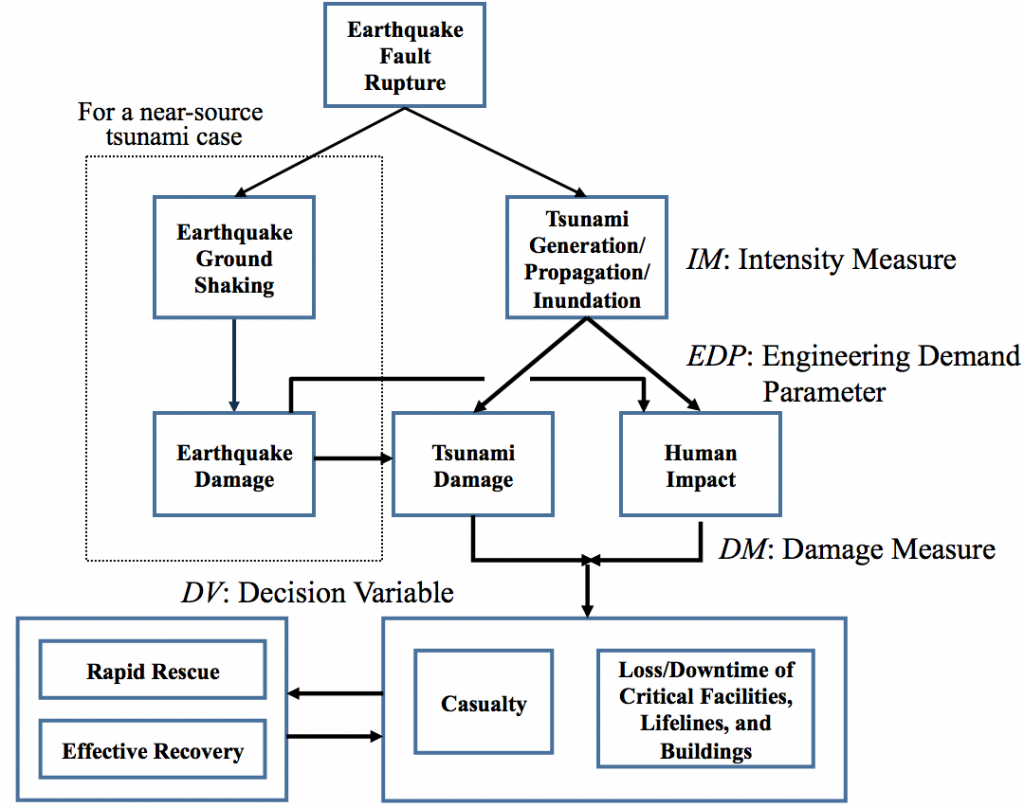
Under the Wave off Kanagawa (Kanagawa oki nami ura) by Katsushika Hokusai:
https://www.metmuseum.org/art/collection/search/45434

Scene of the town of Onagawa, 18 hours after the 2011 East Japan Tsunami event (photo by Satake)
Tsunami Research Program
PEER’s tsunami research program is to develop an effective methodology for damage analyses for critical structures and lifelines: e.g. nuclear and fossil power plants, liquefied natural gas and oil storage facilities, civilian and military ports, emergency tsunami shelters, transportation corridors including coastal bridges, and important public facilities (fire and police stations, hospitals, and schools). Failure of critical coastal structures and lifelines likely lead to loss of life, delays in emergency response, and long-term economic impacts.
This research focus is a crucial gap in tsunami research efforts currently being conducted elsewhere. PEER’s methodology development – called Performance-Based Tsunami Engineering (PBTE) – will ultimately expand and extend the existing Performance-Based Earthquake Engineering (PBEE)methodology.

Flow chart of Performance-Based Tsunami Engineering (PBTE)




